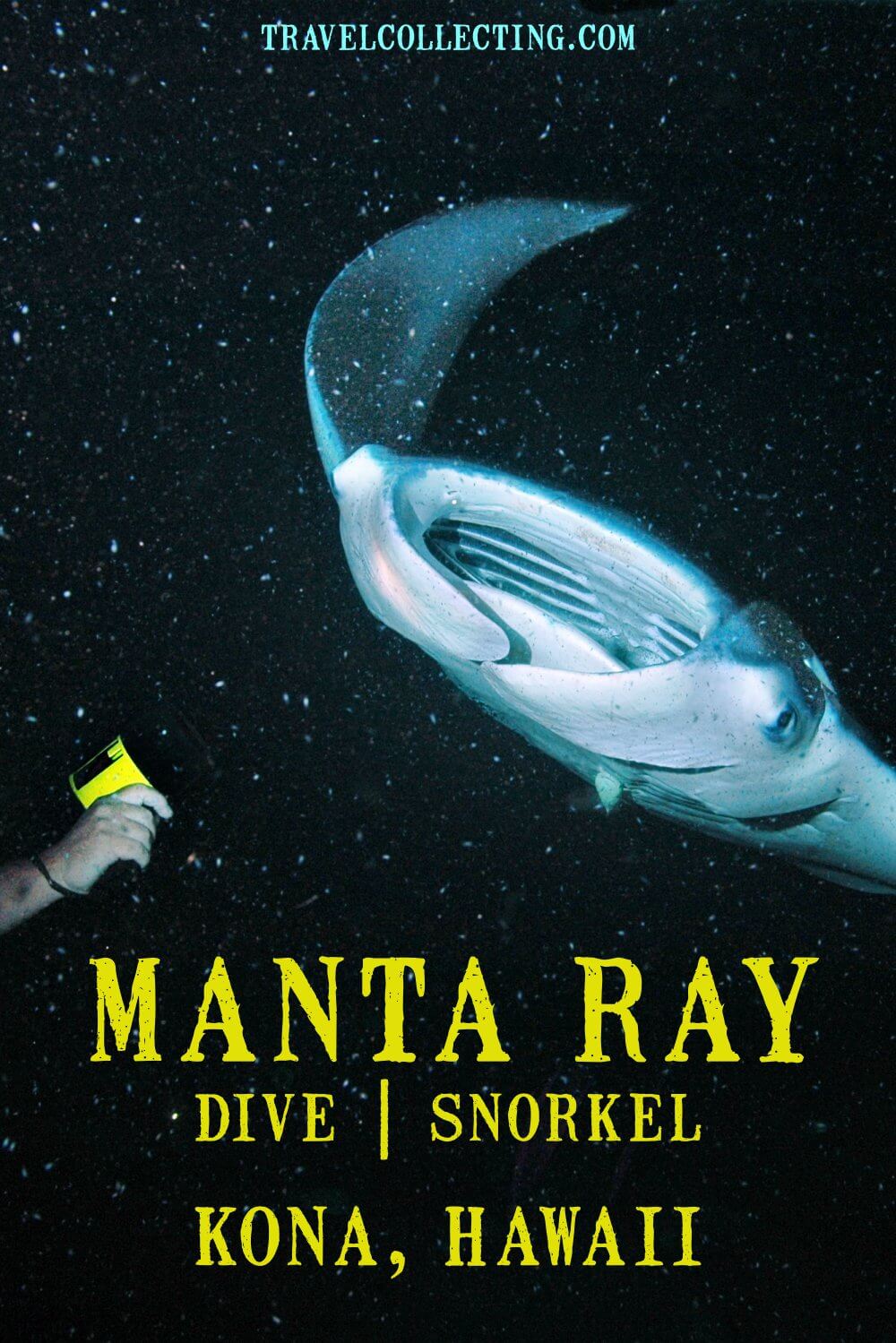

This giant pelagic has a wingspan of up to 20 feet and the largest brain of any fish.

The illumination of the diver’s lights attracts the rich plankton which in turn draws the mantas.

Mantas are filter feeders, and appear to be most active at night when there are greater amounts of microscopic plankton to snack on. These captivating creatures frequent the Kona coast year-round and 90% of the time divers are able to experience them. Our manta ray night snorkel experience is an activity that can only be had in a few locations around the. This interaction happened continuously over the next hour and I when I finally surfaced, everyone came up grinning, feeling incredibly humbled by the ocean and thankful to dive so close to such large and majestic animals. Dont worry manta rays only filter feed on plankton. Homepage Big Island Divers Manta Ray Night Snorkel & Dive Divers & Snorkelers From 129 Book Now Snorkeling SCUBA Diving Get Certified SCUBA Dive Hawaii Hawaii's Best Diving The Big Island of Hawaii is renowned for SCUBA diving, join us and see why We run daily SCUBA dive charters along the Kona coast. I gasped a huge breath of air and was left in pure awe and complete wonder. It comes face-to-face with me and my dive buddy, stares into my eyes inquisitively, and opens its large mouth-it inhales a mouth-full of plankton and at the very last second, soars right over my head missing me by just inches. The gentle giants were acrobats putting on a show for us, and everyone was captivated.Īll of the sudden, a massive manta approaches us. They were elegant swooping, back-flipping, and moving in mesmerizing patterns. First there were 2, then 6, and before I knew it there were 23 mantas swimming from every direction-we had gotten extremely lucky. The ethereal rays moved through the ocean with such grace, ease, and precision that they almost appeared to be flying through the sea, using their pectoral fins as wings. Everyone squealed in excitement through their regulators. I had entered an underwater dreamland and as if on cue, manta rays began gliding toward us.

Strange and beautiful nocturnal creatures emerged minuscule plankton hovered over the beam of my light, bizarre-looking fish surrounded me, and an eel slithered across the ocean floor and eerily disappeared into the light bucket. The ocean had become a whole different world. You will predominantly be staying at the campfire location where the underwater. During the dive you are surrounded by Manta Rays, as seen here on a picture taken during a previous night dive. We kneeled in a circle and a bright spotlight and bucket of flash lights were placed in the center. The Kona manta ray night dive is relatively shallow, at 30-40 feet deep. Tour Summary: The famous manta ray night dive/snorkel in Kona is one of the most memorable dives around the planet. I clicked on my dive light and our group descended to the bottom of the seafloor. 17 years & under must be with a parent/guardian at all times. The PADI crew quickly geared up, assembled the camera equipment, and slipped into darkness. Returning to Hilo after a manta ray night dive is NOT possible on the same night.
#Manta ray night dive kona full#
Vibrant hues of orange and red were eventually replaced by a full moon and stars-exhilaration filled the dive boat. We ventured to Garden Eel Cove, nicknamed “Manta Heaven” and watched the sun set on the Pacific. You will definitely want to check this one off the bucket-list! It is one of the most spectacular displays of wildlife that I have ever seen on a dive. The trip back can be freezing, so put on extra layers to keep yourself warm.Last year, I set out with PADI on a photo expedition to Kona, Hawaii to experience the famous Manta Ray Night Dive, and it was nothing short of magical. After the mantas are gone, you will come back to the harbor. The average time of staying in the water is 30 minutes. During the dive, you will spend most of your time chilling on the ocean floor while the manta rays flipping above you. They come very close to the water surface while feeding. Once you arrive at the feeding grounds, you will douse and wait for the manta rays to appear.
#Manta ray night dive kona how to#
Before the boarding, the crew usually teaches you a couple of things about the manta rays and how to behave while in the water. The boat takes you to one of the manta ray feeding areas. Manta ray night dive usually starts at the harbor from which the boat departs. So if you are a certified scuba diver, come to Big Island during a diving season between May and September to make swimming with mantas more comfortable. The reef manta rays in Hawaii are not migratory creatures and spend their lives in the islands' coastal waters year-round. These beautiful animals gracefully swim, turn, and flip through the light beams, touching their spectators all the way. Manta rays are attracted by plankton, which they filter out of the water by swimming with their enormous mouths wide open.


 0 kommentar(er)
0 kommentar(er)
